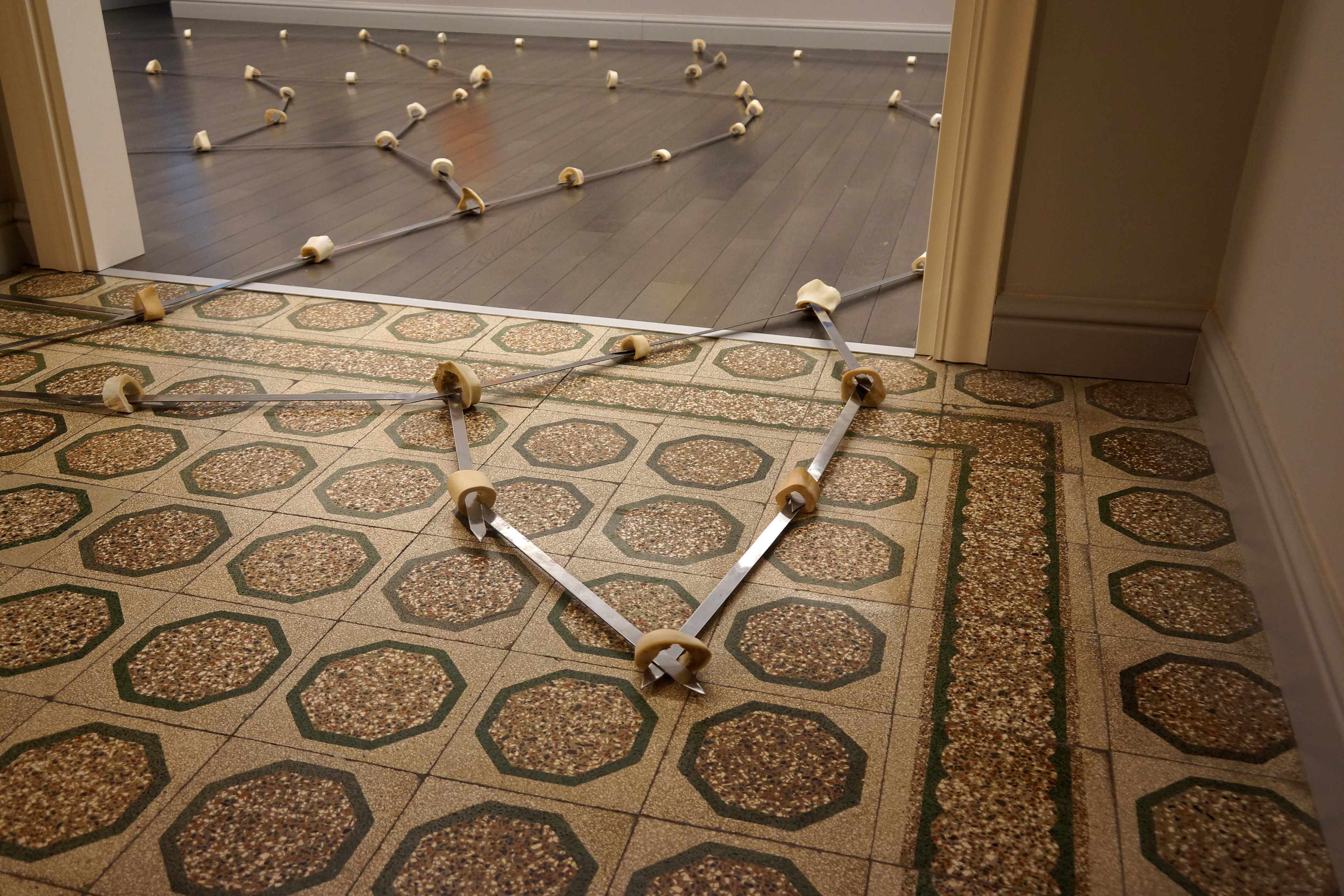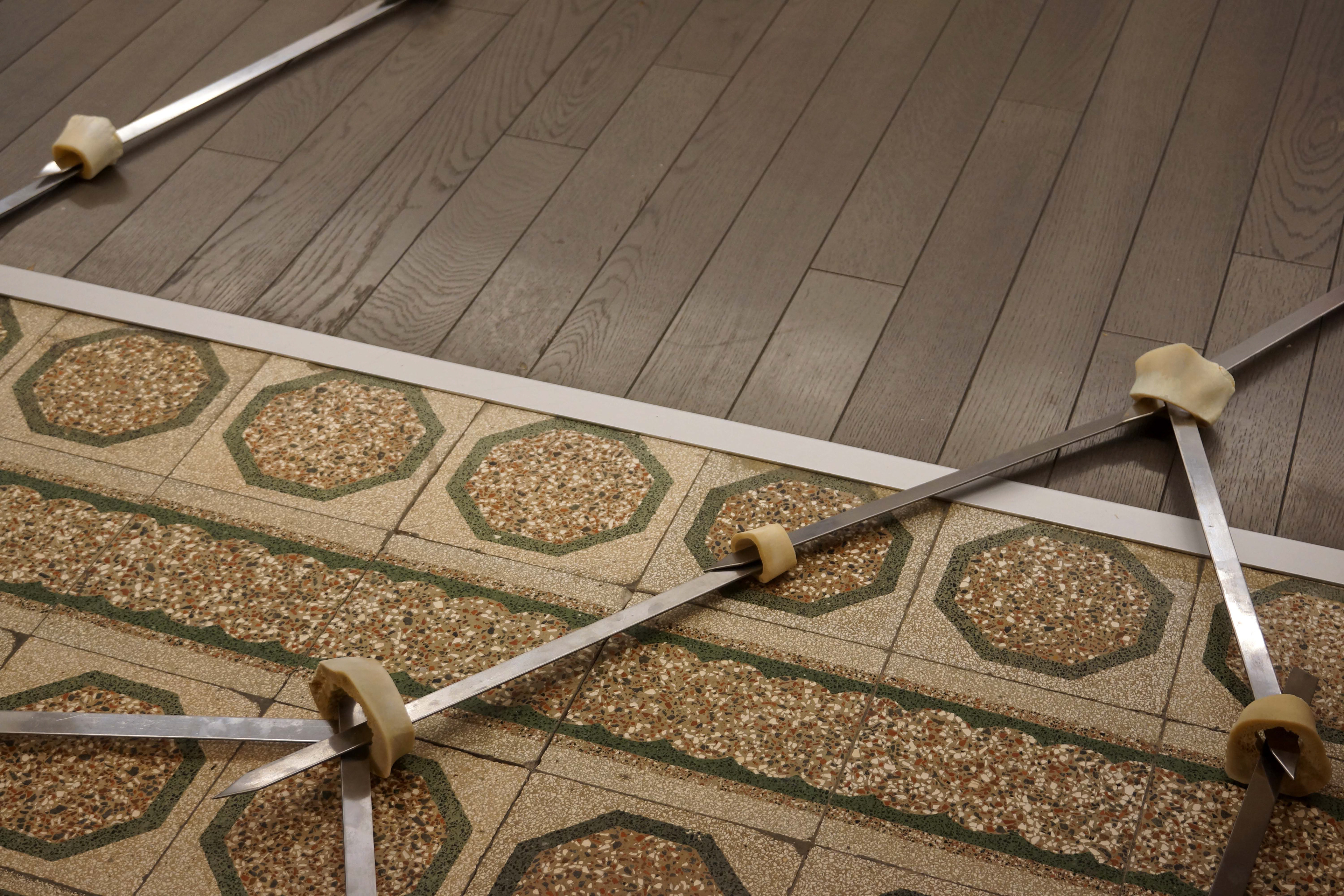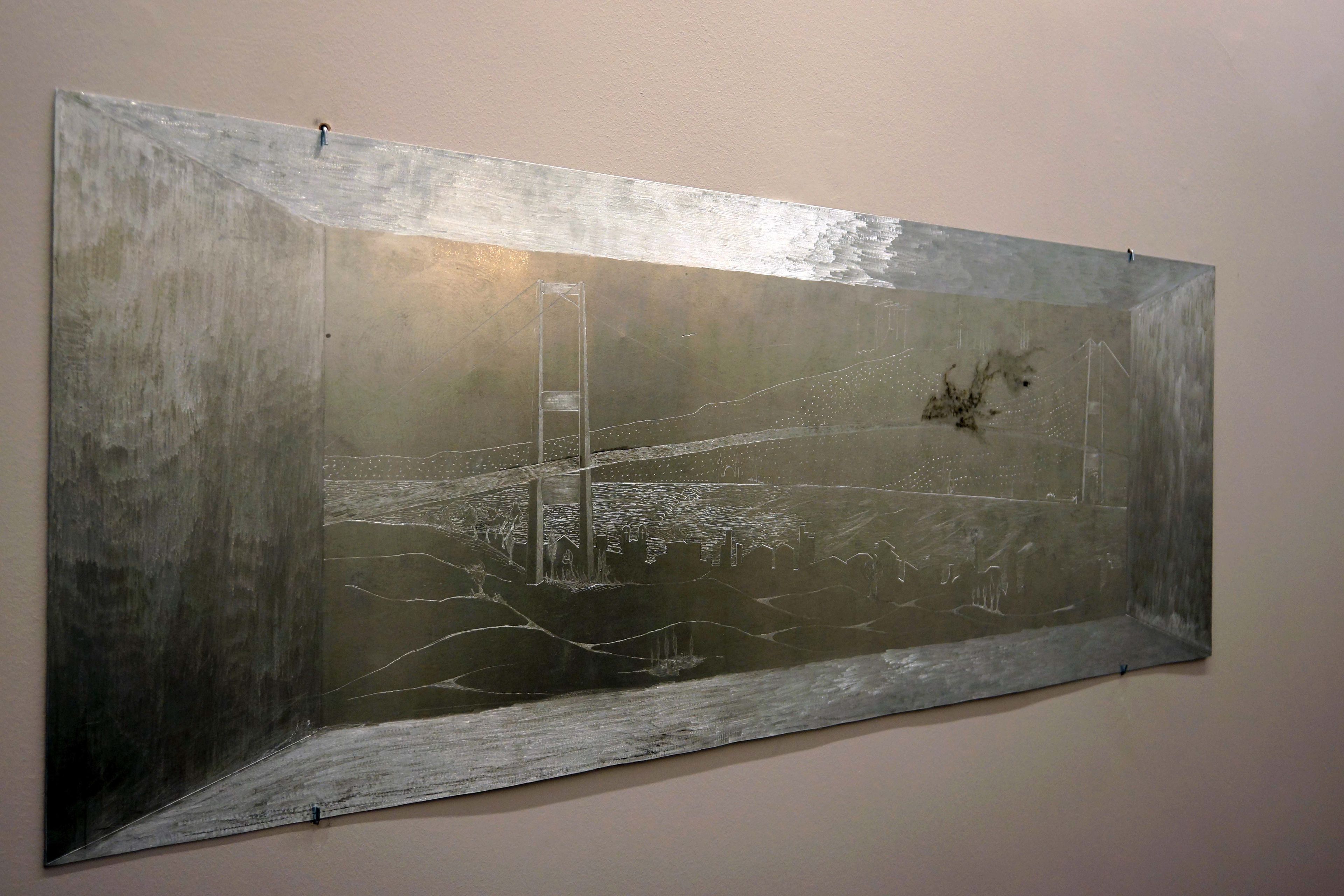For a period Marcel Duchamp gives up painting and starts work on some montages of already existing objects, calling them ready-mades. Later, in 1918 he devotes himself almost entirely to playing chess. During this later phase, Katherine Dreier, Duchamp's partner, patron and a keen collector, commissions a painting for her library. With quite unusual dimensions (69.8 x 303 cm)
Dreier plans this painting be hung in a specific place in the library. I assume that Duchamp wasn't very pleased about this commission. Nevertheless, he paints the commissioned work, if reluctantly, due to financial obligations. He titles the work Tu m'. This is Duchamp's last oil on canvas. The title of the painting, too, gives it quite an enigmatic air. One feels as if Duchamp expected us to fill in the blank and find a word after the mi. In her article on the painting, Catherine Perret says: "As Duchamp has it, whatever follows the 'm' after the apostrophe in Tu m, it graphically presents a suspension from me to you: you love me, you bore me, you annoy me, you insult me, you upset me, you exasperate me...
Whatever. But in the desire of this you', I am the variable?” 11
______________________
11 Cacherine Perret, "Tu m': à propos du titre d'un tableau de Marcel Duchamp", Revue du Musée d'art moderne et Contemporain de Genève.





Parcel / Marcel, 2017
The title of my Parcel/ Marcel installation is a subtle reference to the many puns by Duchamp. As for the physical positioning of the work, it aims at urging the visitor to watch his/her every step. It requires a mindful walk, rather than just a wandering around, perhaps a thinking ahead to the next move. This installation comprises flat kebab skewers connected through veal shinbones. Forming nodes at their junctions, this mesh parcels out the entire exhibition space. Where are we? Where are we walking? We are not on a street. It is a venue designed for viewing art. For me, this place merits respect. Parcel/ Marcel is a sequel or development of my work Parcelling.
Some works may evolve, change or be reinterpreted through the course of time. The art of installation occurs according to the flexibility of the tissue of its strands.


"Woke Up This Morning and Found Myself Dead" aka Jimi Hendrix, 2016-17
On the wall, there is a (50 x 150 cm) picture, an engraving on zinc.
The frame of the work provides a perspective that makes us feel as if we are viewing the painting from inside a box or bunker. Inside the frame, a view can be seen. It is more or less like a view of the Bosphorus Bridge, Istanbul from the hilltops of Ortaköy. This was the view from where I live. It could easily have been a postcard. There is a strange blemish on the Bridge.
Some viewers even thought it was a dragon. Well, in fact, yes, there was a dragon on the bridge that morning. It was breathing fire. It appeared at 6.17 am on the morning of 16th July 2016.
While I was engraving the plate for this work, every now and then I felt the distinctive pattern, the dents in the metal, even while erasing it. I closed my eyes, I think just for a moment. I wondered whether a visually impaired person would make out what the pattern looks like by feeling it with his/her hands. I still do not know, but I made a note to myself to investigate this further. We can surely explore a painting not only with our eyes but also with other senses and modes of feeling. Again, while I was engraving the metal, the feeling that July morning evoked suddenly brought back the lyrics of Woke Up This Morning and Found Myself Dead by Jimi Hendrix. At that moment, I borrowed the title of my work from this great master of music and the guitar. At each touch, the drill I was using to engrave the metal reminded me of Hendrix's guitar tone the gentle touch of a violent sound. So then, apart from being horizontally rectangle, how can my Woke Up This Morning and Found Myself Dead be associated with Duchamp and the "Tu m'arcel" exhibition? You are right. One needs to explore a little bit further. This picture on the zinc plate is the sole source of the engraved print, the very cliché of the original. I am talking about the singularity of the plate. From this, prints on paper or on canvas may form an endless multiplicity of copies.
On second thoughts, what this situation suggests is more the attitude of Andy Warhol, rather than Duchamp. Then again, without Duchamp's influence on subsequent generations and the history of art, would there have been a Warhol?
At this point I would like to dig deeper and uncover another level.
The artist produces the work, the gallerist supports and markets it, while the buyer acquires it as a material asset by paying a price. The buyer has only a material right, with the immaterial value always remaining with the artist, whose work may not be sold or altered without the artist's consent. Most likely, the entire secret will be revealed to the buyer and it is up to the buyer whether to share it or not. In the context of these immaterial rights, the gallery and the artist must be consulted if the buyer is to make further engraved copies out of my Woke Up This Morning and Found Myself Dead. When the buyer turns into producer and seller, he/ she should pay sales commission, agreed upon with the gallery and the artist. Let us suppose the buyer makes new copies of the engraved prints and decides to sell some. A third person comes up and buys one. Then this third person decides to sell his copy. The first buyer becomes the producer/ seller, replacing the artist. Is this a bit confusing? Yet, the law concerning art addresses such issues. For a while Duchamp marketed Constantin Brancusi's work in New York. He transferred a certain proportion of the money he received from buyers over to Brancusi. What did Brancusi do with the money? Well, he bought gold. Brancusi was an aristocrat countryman, whereas Duchamp was a tradesman and dealer. I alerted you earlier about the need to dig deeper for certain links and connections.
Obviously, my attentive reader, I wouldn't expect you to come so far.
Consider this story as a gift from me. Let me leave to one side further tales from art history and work about the hidden, Duchamp's With Hidden Noise, Piero Manzoni's Merda d'Artista and many others.